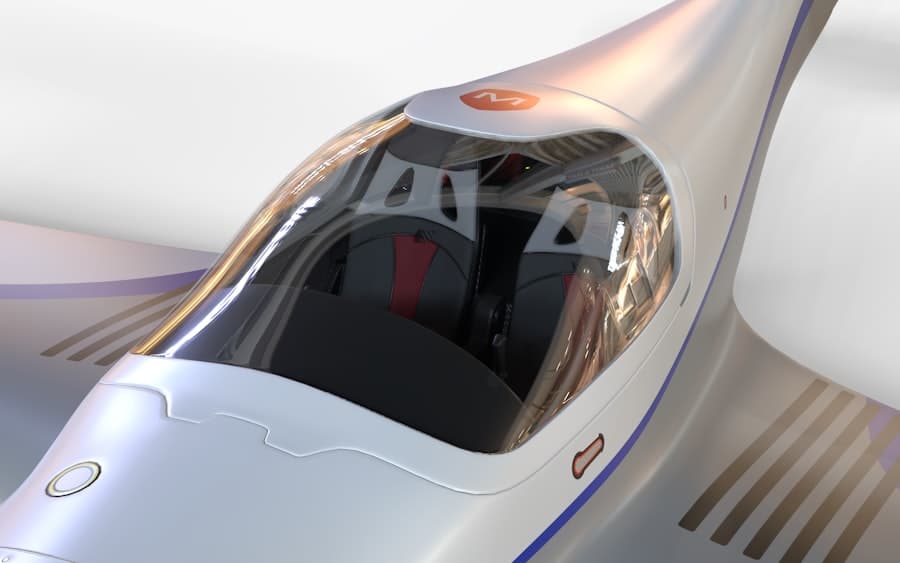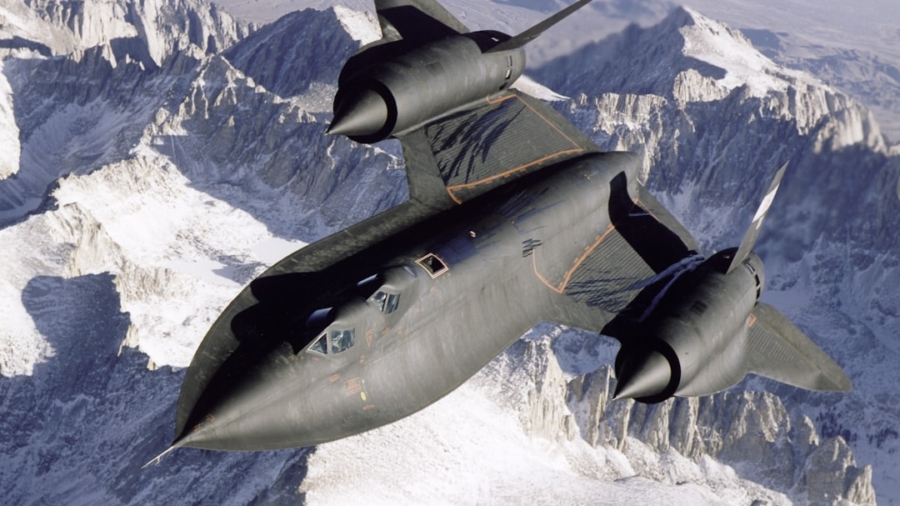Hypersonic passenger travel represents a revolutionary leap in the field of aviation, promising to redefine the way we think about long-distance travel. Defined as travel at speeds exceeding Mach 5, or five times the speed of sound, hypersonic flight has long been the domain of military applications and experimental aerospace projects. However, recent advancements in technology and materials science have sparked renewed interest in the potential for commercial hypersonic travel.
Companies like Boom Supersonic and Hermeus are at the forefront of this movement, developing aircraft that could drastically reduce travel times across the globe. The allure of hypersonic travel lies not only in its speed but also in its potential to connect distant cities in a matter of hours rather than days. For instance, a flight from New York to Tokyo, which currently takes approximately 14 hours, could be reduced to just a few hours with hypersonic technology.
This capability could transform business travel, tourism, and global connectivity, making it feasible for individuals to attend meetings or events in different continents within a single day. As we delve deeper into the implications of hypersonic passenger travel, it becomes clear that this innovation could have far-reaching effects on society, economy, and the environment.
Key Takeaways
- Hypersonic passenger travel refers to the concept of traveling at speeds greater than Mach 5, allowing for significantly reduced travel times between distant locations.
- Potential benefits of hypersonic passenger travel include drastically reduced travel times, opening up new possibilities for business and leisure travel, and increased global connectivity.
- Challenges and obstacles to implementing hypersonic passenger travel include technological limitations, high development costs, and safety concerns related to the extreme speeds and temperatures involved.
- The impact on the aviation industry could be significant, with potential for new market opportunities, increased competition, and the need for substantial infrastructure and regulatory changes.
- Environmental considerations of hypersonic passenger travel include concerns about carbon emissions, noise pollution, and the potential impact on the Earth’s atmosphere.
Potential Benefits of Hypersonic Passenger Travel
The most immediate benefit of hypersonic passenger travel is the significant reduction in travel time. Imagine being able to fly from London to Sydney in under five hours instead of the current 22-hour journey. This time efficiency could revolutionize international business, allowing executives to conduct meetings across continents without the burden of long flights.
Additionally, it could enhance tourism by making far-flung destinations more accessible, encouraging a new wave of global exploration and cultural exchange. Beyond time savings, hypersonic travel could also lead to increased economic activity. The ability to traverse vast distances quickly could stimulate international trade and investment, as businesses would find it easier to establish connections with partners and clients worldwide.
Furthermore, the development of hypersonic technology could create new jobs in engineering, manufacturing, and service sectors, contributing to economic growth in regions involved in this cutting-edge industry. The ripple effects of such advancements could be profound, potentially reshaping global economic dynamics.
Challenges and Obstacles to Implementing Hypersonic Passenger Travel

Despite its promise, hypersonic passenger travel faces numerous challenges that must be addressed before it can become a reality. One of the primary obstacles is the technological complexity involved in designing and building aircraft capable of sustained hypersonic flight. Current materials may not withstand the extreme temperatures generated during hypersonic travel, necessitating breakthroughs in heat-resistant materials and advanced aerodynamics.
Another significant challenge is the regulatory landscape surrounding aviation safety and air traffic management. The introduction of hypersonic flights would require new regulations to ensure safe operations within existing airspace frameworks.
This includes addressing noise pollution concerns, as hypersonic aircraft may produce sonic booms that could disturb communities below their flight paths. Additionally, international cooperation will be essential to establish standardized regulations that govern hypersonic travel across borders, which can be a complex and time-consuming process.
Impact on the Aviation Industry
The advent of hypersonic passenger travel could fundamentally alter the aviation industry as we know it. Traditional airlines may need to adapt their business models to accommodate this new mode of transportation, potentially leading to a shift in market dynamics. Established carriers might find themselves competing with new entrants specializing in hypersonic travel, which could drive innovation and improve service offerings across the board.
Moreover, the introduction of hypersonic flights could lead to a re-evaluation of airport infrastructure.
The integration of hypersonic travel into existing air traffic systems will also require significant upgrades to navigation and communication technologies, ensuring that safety remains paramount as airspace becomes increasingly crowded.
Environmental Considerations of Hypersonic Passenger Travel
As with any major technological advancement, environmental considerations are paramount when discussing hypersonic passenger travel. The high speeds associated with hypersonic flight raise concerns about fuel consumption and emissions. Current propulsion technologies may not be sustainable at such velocities, leading to increased greenhouse gas emissions that could exacerbate climate change.
Researchers are exploring alternative fuels and propulsion methods that could mitigate these environmental impacts while still delivering the speed benefits associated with hypersonic travel. Additionally, the potential for sonic booms presents another environmental challenge. These loud noises can disrupt communities located near flight paths, leading to public opposition against hypersonic travel initiatives.
Addressing these concerns will require innovative engineering solutions aimed at reducing noise pollution without compromising performance. The aviation industry must balance the desire for speed with its responsibility to minimize environmental harm and maintain community relations.
Economic Implications of Hypersonic Passenger Travel

The economic implications of hypersonic passenger travel extend beyond immediate job creation and market competition; they encompass broader shifts in global economic patterns. By drastically reducing travel times, hypersonic flights could facilitate more dynamic international trade relationships. Businesses would have greater flexibility in managing supply chains and logistics, potentially leading to lower costs and increased efficiency in global commerce.
Moreover, the emergence of a hypersonic travel market could attract significant investment from both private and public sectors. Governments may see the potential for economic growth through infrastructure development and technological innovation, prompting them to support research initiatives and partnerships with private companies. This influx of capital could further accelerate advancements in aerospace technology, creating a virtuous cycle of innovation that benefits multiple industries.
Safety and Regulatory Concerns with Hypersonic Passenger Travel
Safety is a paramount concern when it comes to any form of air travel, and hypersonic passenger travel is no exception. The extreme speeds involved pose unique risks that must be thoroughly understood and mitigated before commercial operations can commence. Engineers will need to conduct extensive testing to ensure that aircraft can withstand not only the physical stresses of hypersonic flight but also potential emergencies that may arise during operation.
Regulatory bodies will play a crucial role in establishing safety standards for hypersonic travel. This includes developing protocols for pilot training specific to high-speed flight operations and creating guidelines for emergency response procedures tailored to the unique challenges posed by hypersonic aircraft. Collaboration between manufacturers, airlines, and regulatory agencies will be essential to create a comprehensive safety framework that instills public confidence in this new mode of transportation.
Future Outlook for Hypersonic Passenger Travel
Looking ahead, the future of hypersonic passenger travel is filled with both promise and uncertainty. While significant technological hurdles remain, ongoing research and development efforts are paving the way for breakthroughs that could make commercial hypersonic flights a reality within the next few decades. As companies continue to innovate and refine their designs, we may witness the first commercial hypersonic flights emerge on the market.
Public interest in faster travel options is likely to drive demand for hypersonic services once they become available. As consumers become accustomed to rapid advancements in technology across various sectors, expectations for air travel will evolve accordingly. The aviation industry must remain agile and responsive to these changing demands while addressing safety, environmental, and regulatory challenges head-on.
Ultimately, the successful implementation of hypersonic passenger travel could usher in a new era of global connectivity that transforms how we experience the world around us.
In the rapidly evolving world of aviation, the potential for hypersonic passenger travel is a topic of significant interest, promising to revolutionize how we perceive long-distance travel. This technological leap could drastically reduce flight times, making global travel more accessible and efficient. A related article that delves into the broader landscape of technological advancements is The Best Tech Products 2023. This article explores various cutting-edge innovations across different sectors, highlighting how technology continues to push boundaries and create new possibilities, much like the anticipated impact of hypersonic travel in aviation.
FAQs
What is hypersonic passenger travel?
Hypersonic passenger travel refers to the concept of transporting passengers at speeds greater than Mach 5, which is five times the speed of sound. This would allow for significantly faster travel times compared to current commercial aviation.
How does hypersonic passenger travel work?
Hypersonic passenger travel involves using advanced propulsion systems and aerodynamic designs to achieve speeds that exceed Mach 5. This typically involves the use of scramjet engines, which can operate efficiently at hypersonic speeds.
What are the potential benefits of hypersonic passenger travel?
The potential benefits of hypersonic passenger travel include drastically reduced travel times for long-haul flights, opening up new possibilities for global travel and business. It could also lead to a more efficient use of airspace and reduced environmental impact per passenger mile.
What are the challenges of hypersonic passenger travel?
Challenges of hypersonic passenger travel include the development of reliable and safe hypersonic aircraft, addressing the technical and engineering hurdles associated with sustained hypersonic flight, and ensuring the safety and comfort of passengers at such high speeds.
How could hypersonic passenger travel disrupt aviation?
Hypersonic passenger travel has the potential to disrupt aviation by offering a faster and more efficient alternative to traditional commercial air travel. This could lead to changes in the way airlines operate, the design of aircraft, and the overall travel experience for passengers.

